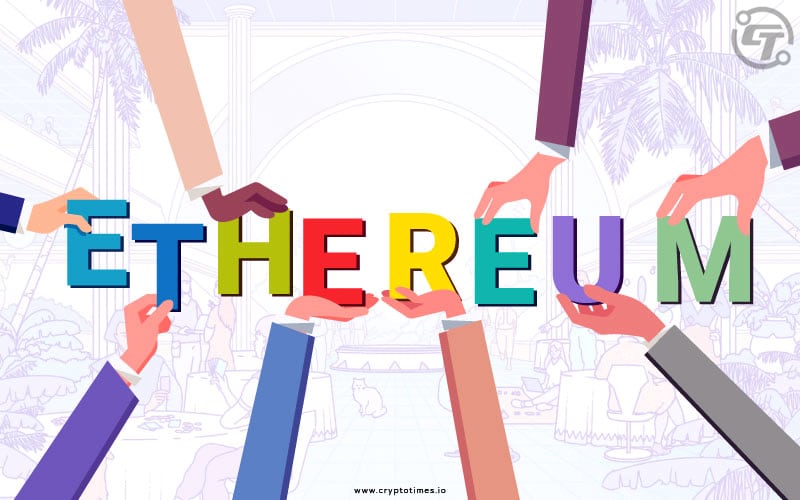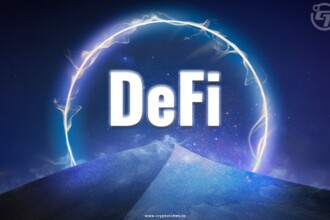A common question we all have when putting our ETH or other ERC tokens on the Ethereum network is who controls all of the Ethereum network’s essential and key decisions. How can the Ethereum blockchain’s governance be maintained by such a large population scattered throughout the globe?
Have you ever questioned how the decentralized operations conducted on the Ethereum blockchain work?
To be honest, no one operates or owns Ethereum. This is what you will be bluntly answered by Google when you curiously search about Ethereum’s governance mechanism.
There is no room for doubt that Vitalik Buterin is the founder of Ethereum. Indeed he is. However, the decentralized nature of Ethereum makes it absolutely impossible for Vitalik Buterin to control the network.
So, straight to the point, let’s understand how Ethereum governance works?
What do we mean by Governance?
Governance basically means how a particular blockchain or a network is controlled and by whom. The blockchain can either be partially decentralized or fully decentralized.
Ethereum is currently a fully decentralized blockchain with a totally decentralized governance mechanism.
Ethereum’s Governance mechanism
Ethereum is a permissionless decentralized blockchain therefore, anyone from anywhere in the world can participate in the on-chain activities. There are no restrictions set for who can or cannot build an application or send a transaction.
So, how are the decisions made? To understand this we need to understand two kinds of Governance mechanisms.
- On-chain Governance
On-chain governance mechanisms include voting on the blockchain by stakeholders (usually by holders of a governance token ). In this process of governance, the proposed protocol changes are already written in the code and they just need approval.
Voting is done in order to decide whether the proposal should be implemented or not. Many Dapps built on the Ethereum network, especially DAOs (Decentralized Autonomous Organizations) use the On-chain governance mechanism.
- Off-chain Governance
In the Off-chain Governance mechanism, all the protocol change decisions are made through an informal process of social discussion, which if approved are implemented in the code. Ethereum Governance happens Off-chain with a wide variety of stakeholders participating in the process.
Who is involved in Ethereum’s governance?
When we talk about Ethereum governance, we don’t simply mean the individual entities or pieces that are involved in key decisions about operations, proposals, or initiatives. The consent of several elements such as developers, miners, Ether holders, EIP Authors, and others is also required to implement critical choices on the Ethereum blockchain.
- Ether Holders – People who hold arbitrary amounts of ETH tokens
- Developers – Both Ethereum core developers and developers who build apps on the Ethereum network can vote in Ethereum Governance.
- Miners – Nodes or miners who validate the transactions on Ethereum Blockchain.
- EIP Authors – These people raises Ethereum Improvement Proposals (EIPs) to make amendments into Ethereum protocol
What is an EIP – Ethereum Improvement Proposal?
Ethereum Improvement Proposals (EIP) enables anyone from the Ethereum community to create a proposal to make adequate beneficial changes. Sometimes suggestions from EIPs aids Ethereum to serve in a better manner to the entire community.
Anyone can prepare an EIP and submit it for community discussion. If the community finds it worth giving for the consumers on Ethereum. An EIP author needs to follow a set process before approving the EIP. Once the community is satisfied with the proposal, they can then release the feature into the main chain.
How are disagreements handled in Ethereum Governance?
Usually, when the majority agrees on something, the participants adjust with the proposal and the proposal gets finalized. However, if a group of people strongly reject the proposal, it can lead to a chain split.
When a chain gets split, the opposition will keep on mining blocks for the old chain ( if they do not want to implement the proposal ) and the other participants who were willing to implement the proposal will mine new blocks according to the upgrade. This is, however, very rare but chain splits have happened in the past, for example the Ethereum Classic Split.
For those unfamiliar with the Ethereum Classic Split, it was the outcome of a disagreement between the Ethereum community in 2016 over the DAO hack, which resulted in the formation of two blockchains: Ethereum Classic, an unaltered version, and Ethereum, an altered version.
Also Read: How to Cancel an Ethereum Transaction
Decentralized Applications Governance mechanism
As we have previously discussed, there are two kinds of dAPPS – centralized and decentralized dAPPS. The owner of the dAPP can decide whether to keep the dAPP centralized or make it a decentralized one. Here we will discuss the governance mechanism of decentralized dAPPS.
- Governance Mechanism of Decentralized dAPPS (On-Chain Governance)
Mostly all the popular dAPPS run on the DAO mechanism. Most of them have a governance token that can be used to vote on the proposals of the project. Anyone holding the governance token can file a proposal to change or add something to the project.
When the majority agrees on it, it is implemented in the dAPP. Here are some top dAPPS built on Ethereum which use the DAO mechanism for governance –
- Uniswap
- Aave
- Maker
- Curve
- Compound
- Ethereum Name Service
Conclusion
The Governance of the Ethereum network, dApps, and all other Ethereum-based protocols are driven by a permissionless, trustless, and decentralized mechanism that includes DAOs and Governance tokens. Due to this unique governance system anyone in the world can participate in the Ethereum network proposals and can vote for them.
However, certain disagreements can even happen but they are either solved by conservative methods or by some radical methods (Chain Splits).
Read More About the Ethereum Merge







